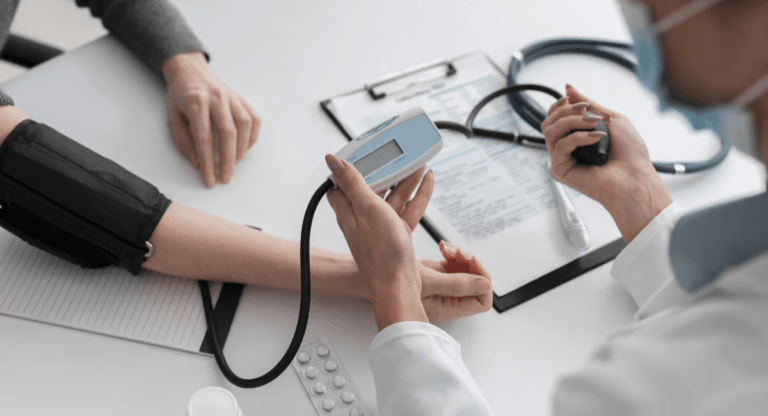How to Handle a Medical Emergency Until Your Home Visit Doctor Arrives?
Experiencing a medical emergency can be stressful and overwhelming. Knowing how to manage the situation until help arrives can significantly affect the outcome. Whether it’s a sudden injury, an unexpected illness, or an urgent health issue, staying calm and following these steps can help you provide the best care possible until a home-call doctor arrives.
Stay Calm and Assess the Situation
The first step in handling any medical emergency is to remain calm. Panicking can cloud your judgment and make the situation worse. Take a few deep breaths and assess the situation clearly. Check the person’s condition, look for signs of distress, and determine the seriousness of the situation. If they are conscious, ask them about their symptoms. If they are unconscious, check their breathing and pulse.
What to Look For:
- Difficulty breathing
- Severe bleeding
- Unconsciousness or drowsiness
- Chest pain or pressure
Understanding the severity of the emergency will guide your next steps. If you’re unsure, it’s better to err on the side of caution and seek immediate help.
Call for Professional Help
Once you’ve assessed the situation, calling for professional help is crucial. If you have access to a phone, dial emergency services for immediate assistance. Provide clear and accurate information about the emergency, including the location, the nature of the problem, and any relevant medical history.
Essential Information to Provide:
- Exact address
- Description of symptoms
- Any known allergies or pre-existing conditions
- Current medication or treatments
Professional help might take some time, especially if it’s a home visit doctor. In the meantime, focus on stabilizing the situation.
Administer Basic First Aid
While waiting for the medical professionals, administer basic first aid if you’re trained to do so. Basic first aid can help manage the situation until more advanced care is available. Here are some common first aid procedures:
- For Bleeding: Apply pressure to the wound with a clean cloth or bandage. If the bleeding is severe, keep applying pressure and try to elevate the injured area if possible.
- For Burns: Cool the burn with running water for at least 10 minutes. Cover it with a clean, non-stick bandage. Avoid using ice or ointments.
- For Choking: Encourage the person to cough if they can. If not, perform abdominal thrusts (Heimlich maneuver) to dislodge the obstruction.
Ensure you are using correct techniques and avoid actions that could worsen the injury or condition.
Keep the Person Comfortable
While waiting for the home visit doctor, make the person as comfortable as possible. This involves both physical comfort and emotional reassurance. Ensure they are comfortable and provide warmth if they are feeling cold. Offer reassurance and stay with them to alleviate anxiety.
Comfort Measures Include:
- Providing a blanket if they’re cold
- Reassuring them with calm and encouraging words
- Keeping their head elevated if they’re feeling faint or dizzy
Emotional support can be just as important as physical care in managing a medical emergency. Your presence can significantly affect how they feel while waiting for professional help.
Monitor Vital Signs
Keep an eye on the person’s vital signs, such as their breathing, heart rate, and level of consciousness. Monitoring these signs can provide important information to the home visit doctor when they arrive. If there are any changes in their condition, note them down to inform the medical professionals.
What to Monitor:
- Breathing rate and pattern
- Pulse rate and rhythm
- Skin colour and temperature
- Level of consciousness
Changes in these vital signs can indicate a worsening condition and may require immediate intervention when the doctor arrives.
Prepare for the Arrival of the Home Visit Doctor
When the home visit doctor is on their way, make sure you’re ready to provide them with all the necessary information. Gather any relevant medical records, such as allergies, medications, or previous health conditions. Clear a path for them to access the patient easily and ensure that the environment is as calm and organized as possible.
Preparation Steps:
- Collect relevant medical information
- Clear a space for the doctor to work
- Inform others in the household about the situation
- Ensure the contact number is readily available
Being prepared will help the home visit doctor to assess and treat the patient more efficiently.
Follow-Up Care
After the doctor has arrived and the immediate emergency has been addressed, follow their instructions for follow-up care. This may include monitoring the patient’s condition, administering prescribed medications, or scheduling further appointments. Following the doctor’s advice carefully is crucial for the patient’s recovery and well-being.
Post-Emergency Steps:
- Adhere to any prescribed treatments or medications
- Schedule and attend follow-up appointments
- Monitor the patient’s recovery progress
- Seek additional support if needed
Effective follow-up care helps the patient fully recover and ensures that any further issues are promptly addressed.
Be Prepared for Future Emergencies
Handling a medical emergency effectively requires preparation. Consider taking a first aid course to improve your skills and knowledge. A basic first aid kit readily available in your home can also be beneficial. Regularly updating yourself with emergency procedures and knowing how to contact local home visit doctors can make a significant difference in managing future emergencies.
Preparation Tips:
- Take a certified first aid course
- Keep a well-stocked first aid kit at home
- Learn basic emergency procedures
- Keep a list of local home-call doctors
Being prepared can give you the confidence to handle emergencies effectively and provide the best care until professional help arrives.
Managing a medical emergency until a home visit doctor in Kolkata arrives can be challenging, but staying calm and following these steps can make a significant difference. By assessing the situation, calling for help, administering first aid, and preparing for the arrival of medical professionals, you can ensure the best possible outcome for the patient.





